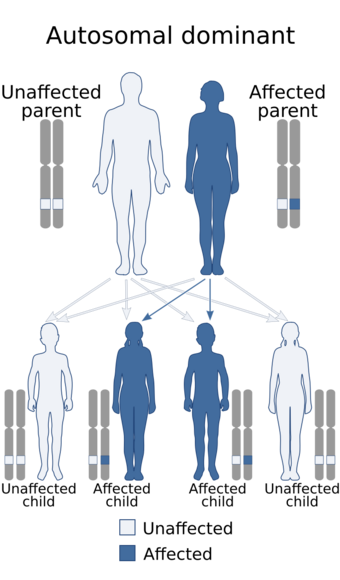Medicine:Upington disease
| Upington disease | |
|---|---|
| Other names | Perthes-like hip disease, Enchondromata, Ecchondromata, and Familial dyschondroplasia,[1][2] |
 | |
| Upington disease has an autosomal dominant pattern of inheritance. | |
Upington disease is an extremely rare[3] autosomal dominant malformation disorder. It has only one published source claiming its existence in three generations of one family from South Africa .[4]
Presentation
The disease is characterized by Perthes-like pelvic anomalies (premature closure of the capital femoral epiphyses and widened femoral necks with flattened femoral heads), enchondromata and ecchondromata.[citation needed]
Genetics
Upington disease is inherited in an autosomal dominant manner.[4][5] This means the defective gene is located on an autosome, and one copy of the defective gene is sufficient to cause the disorder, when inherited from a parent who has the disorder.[citation needed]
Management
Eponym
The name Upington refers to the city in the Northern Cape Province, South Africa , from where the family originates.[1]
References
- ↑ 1.0 1.1 Online Mendelian Inheritance in Man (OMIM) 191520
- ↑ "Upington disease | Disease | Living With | Genetic and Rare Diseases Information Center (GARD) – an NCATS Program". https://rarediseases.info.nih.gov/gard/5421/upington-disease/resources/3#Medical%2520Resources.
- ↑ Disease ID 5421 at NIH's Office of Rare Diseases
- ↑ 4.0 4.1 "Upington disease: a familial dyschondroplasia". S. Afr. Med. J. 45 (36): 994–1000. 1971. PMID 5316541.
- ↑ RESERVED, INSERM US14-- ALL RIGHTS. "Orphanet: Upington disease". https://www.orpha.net/consor/cgi-bin/OC_Exp.php?Lng=GB&Expert=3408.
External links
| Classification | |
|---|---|
| External resources |
 |

